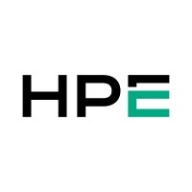

SolarWinds NPM and HPE OneView compete in network and infrastructure management solutions. SolarWinds NPM appears to have the upper hand because it supports a wider range of devices, making it more versatile.
Features:SolarWinds NPM offers robust network performance monitoring, scalability, and easy setup with real-time alerts, flexibility, and customization. It is highly capable of managing diverse network devices. HPE OneView provides centralized management of storage, servers, and network resources with strong automation. Its centralized interface is ideal in HPE environments but is limited in supporting non-HPE devices.
Room for Improvement: SolarWinds NPM users desire enhanced alert customization, reduction of false positives, and more flexible licensing. HPE OneView users seek better support for third-party hardware, faster integration with updates, and improved automation and visual troubleshooting indicators.
Ease of Deployment and Customer Service: SolarWinds NPM is preferred for flexible deployment options and generally positive customer service feedback, though some experience variability in response times. HPE OneView offers straightforward deployment in HPE environments and a user-friendly centralized interface, but it sometimes provides slower customer support compared to rivals.
Pricing and ROI: SolarWinds NPM offers scalable licensing for growing networks but is considered costly by some due to its modular licenses. HPE OneView can be cost-effective, particularly for existing HPE customers, though initial costs may be high. Both products deliver strong ROI by enabling strategic infrastructure investment decisions and improving monitoring efficiency.
The return on investment is significant as the solution effectively reduces costs while being worth its expense.
The customer service and support have been responsive.
The technical support for HPE OneView rates as an 8 on a scale from 1 to 10, where 1 is the worst and 10 is the best.
I would give the quality of HPE OneView's technical support an eight out of ten rating, indicating good customer service and support in my opinion.
If there is no timely response, getting a resolution is more difficult.
We had contact with SolarWinds regarding the implementation, and they were helpful.
They have good technical support.
HPE OneView is highly scalable, especially useful for organizations with large infrastructures.
HPE OneView is a scalable solution since you can integrate any number of servers based on your license.
Scalability is fine as we can add Synergy frames and extend many frames as needed.
SolarWinds NPM is scalable and effective in handling large network infrastructures.
The stability of the blades is concerning; we have frequent issues with blades having memory or power issues.
HPE OneView is a stable solution that works efficiently.
It supports unified monitoring effectively but may have areas for enhancement.
The NPM product is stable, particularly when used for simple network monitoring.
The upgrade process is lengthy, requiring careful planning as we cannot match ESXi versions without aligning OneView first, leading to delays.
From the dashboard and reporting perspective, HPE OneView could be improved by having multiple modules rather than just a single customization option.
I believe the prices of HPE OneView should be reduced, as it is quite expensive.
Customers have given feedback about the delayed response times from the technical team.
SolarWinds needs to upscale on observability and add full-fledged observability features, including security features.
Features such as taking backup of the devices or configurations of the devices can be included in further versions of SolarWinds NPM.
Customers need to pay a substantial amount for the licenses, especially when monitoring a large number of servers and storages.
Our main concern is managing expenses related to the VMware licensing model which affects blade usage.
PRTG's package offers all features in one bundle, which is cost-effective.
The solution is considered expensive.
I can monitor everything in one view, which has significantly improved operational efficiency for us.
One of the best features of HPE OneView is that you get a complete architecture with a single click.
This approach makes the upgrade process straightforward and efficient.
It provides a detailed overview of the network, which is valuable.
The most valuable feature for us is the database performance analyzer, which we use a lot.
SolarWinds NPM has specific modules for monitoring different network capabilities, which provides rich features for carrying out specific tasks.
| Product | Market Share (%) |
|---|---|
| SolarWinds NPM | 3.8% |
| HPE OneView | 1.4% |
| Other | 94.8% |


| Company Size | Count |
|---|---|
| Small Business | 22 |
| Midsize Enterprise | 15 |
| Large Enterprise | 51 |
| Company Size | Count |
|---|---|
| Small Business | 59 |
| Midsize Enterprise | 33 |
| Large Enterprise | 84 |
HPE OneView is your infrastructure automation engine to simplify operations, increasing the speed of IT delivery for new applications and services. Through software defined intelligence, HPE OneView brings a new level of automation to infrastructure management by taking a template driven approach to provisioning, updating, and integrating compute, storage, and networking infrastructure. Designed with a modern, standard-based API and supported by a large and growing partner ecosystem, HPE OneView also makes it easy to integrate powerful infrastructure automation into existing IT tools and processes. Take command with HPE OneView to deploy infrastructure faster, simplify operations and increase productivity.
HPE OneView innovations provide you the industry’s best infrastructure management experience, simplifying operations for HPE BladeSystem, HPE ProLiant servers, 3PAR storage, HPE Networking and HPE ConvergedSystems.
SolarWinds NPM is a network monitoring solution that enables you to detect, diagnose, and resolve network performance issues and outages quickly and efficiently. The solution is a powerful tool that can help you increase service levels, reduce downtime with multi vendor network monitoring, simplify the management of complex network devices, improve operational efficiency, and much more.
SolarWinds NPM Features
SolarWinds NPM has many valuable key features. Some of the most useful ones include:
SolarWinds NPM Benefits
There are several benefits to implementing SolarWinds NPM. Some of the biggest advantages the solution offers include:
Reviews from Real Users
Below are some reviews and helpful feedback written by PeerSpot users currently using the SolarWinds NPM solution.
PeerSpot user Andrew N., Senior Network Engineer at Element Critical, says, “The "Performance Analyzer" feature is the solution's most valuable aspect. It's able to do the bounded graphs of all the interface stats, from errors to broadcasts and to current traffic. With a click of a button you're able to, in one interface, look at historical data for those items.” He also adds, “From the troubleshooting point of view, just having that peace of mind is great. And, The solution is extremely stable. We haven't had any issues in that regard. We haven't had issues with bugs, glitches, or crashes."
Daniel S., Systems and Data Warehouse Supervisor at MMSD, mentions, “The alerting and usage tracking is a valuable feature because it alerts us when we're getting near capacity on disk space, network utilization or processor utilization. It helps us manage our capacity and enables us to be proactive.”
A Senior Vice President and CIO at a financial services firm explains, “As we look to add more servers to our virtual environment and to understand the impact, the solution allows us to dig into the historical charts related to capacity planning. It also gives us visibility of spikes and allows us to track down the reasons for their occurrences. So too, it makes room for potential processes that have gotten hung or runaway and to know when it's time to reboot a server or service.”
Dinesh N., Digital Innovation at Bobcat Company, states, “The best part of the solution is the sharing display. It gives a general public ID wherein everyone can link to a public display. That's a good feature.”
Fazal A., Implementation & Support Specialist at 360Factors, comments, “We have configured multiple alerts for our network devices, including routers and switches, so that we are notified if any interface goes down. In the event an interface goes down, we have multiple reports that include availability monitoring, network uptime monitoring, and network downtime monitoring. These reports are on multiple schedules such as the end of the day, end of the last business day of the week, monthly, and quarterly. This gives us the ability to provide reports to our management and let them know the performance of our network.”
We monitor all IT Infrastructure Monitoring reviews to prevent fraudulent reviews and keep review quality high. We do not post reviews by company employees or direct competitors. We validate each review for authenticity via cross-reference with LinkedIn, and personal follow-up with the reviewer when necessary.